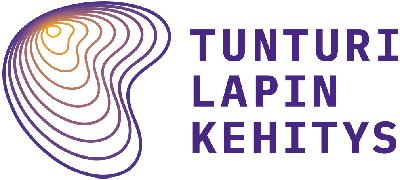From Pallas to Kilpisjärvi – For the entire Fell Lapland
Fell Lapland Development is a voluntary cooperation body for the municipalities of Enontekiö, Muonio and Kittilä. When the setting for life is the largest fells in Finland and the rhythm is provided by the ever-changing seasons, limitless possibilities are just waiting to be realized. Our central mission is to advance the development of the Fell Lapland region in a variety of ways, from finding new investments to improving marketing and services.
What is Fell Lapland?
The land of the fells
Fell Lapland is a sub-region formed by four municipalities – Muonio, Enontekiö, Kittilä and Kolari – located in the Western Lapland. As the name suggests, it is a unique cluster of fells, which include Pallas, Olos, Ylläs and Levi. In addition to the popular ski resorts, Fell Lapland has plenty more to offer; the indigenous Sámi culture, eight distinct seasons and the cleanest air in the world give the region its special character. More than 700 000 tourists stay in the area every year.
Eight seasons
Four seasons did not suffice for Laplanders and the Sami people in the olden days. Instead, they structured time into eight periods: autumn-winter; winter; spring-winter; spring; spring-summer; summer; summer-autumn and autumn. The four main seasons were supplemented in this way by four “half-seasons”. The warm, moonlit nights of August belong to summer; however, August comes with a hint of autumn’s crispness and its piercing, melancholic light. It only takes a couple of cold, frosty nights, and the autumn-summer turns into autumn. When leaves begin to fall and lakes become covered with fog and ice at night, autumn has arrived in full force, though it is not quite yet autumn-winter.
- 16.1-28.2 Pakkastalvi (‘frosty winter’) is the first season of the year. The New Year festivities have come to an end, and it is dark, cold and quiet until March or April when, soon after the
- 1.3-14.4 Lental Season, hankikanto (‘the spring of crusted snow’) arrives. The amount of light increases significantly, even though it is still dark and cold at night. With increased light, everything in nature begins to awake. At the first sign of spring,
- 15.4-15.5 jäidenlähtökevät (literally ‘ice break-up’) begins: snow still covers the ground, but the first plants begin to appear, and reindeer give birth to calves. The first stoneflies begin to crawl on the snow near the waterfront.
- Once the sun no longer sets, 16.5-15.7 the ‘light green summer’ (keskiyönauringon aika), or the time of the midnight sun, begins. With 24 hours of daylight, the entire ecosystem lives in ecstasy.
- 16.7-9.9 The ‘harvest time’ (sadonkorjuunaika) begins when the willowherb blossoms, and days begin to get shorter.
- This is followed by 10.9-14.10 ruska or ‘colourful autumn’ when the fiery autumn colours remind us that soon the ground will be covered by ice and snow again.
- And then… the 15.10-15.11 ‘first snow’ (ensilumi) arrives, only to melt during the first days of mild weather. The frost that follows this period of “black snow” will freeze the ground.
- The last season, ending the yearly cycle, is 16.11-15.1 Christmas (joulukaamos), a period of constant darkness. The long polar nights are followed by the greatest celebration of the year: Christmas – a celebration of rebirth, light and letting go of the old.
There were valid reasons for dividing time into eight distinctive seasons. By predicting weather and carrying out seasonal tasks according to the weather signs, the northern way of life gave birth to the northern state of mind: a mentality which imitates nature. Nature is in a constant state of change, simultaneously in the present season while on the way to the next. This is also true of humans: we are constantly in a state of flux; always moving on and preparing for tomorrow.
The structures and institutions of society may change, but mentalities, moulded by nature, remain practically unchanged through generations. In this way, the eight seasons have also remained. In a number of ways, they still influence the things we do, what we feel and how we think, all the time.




